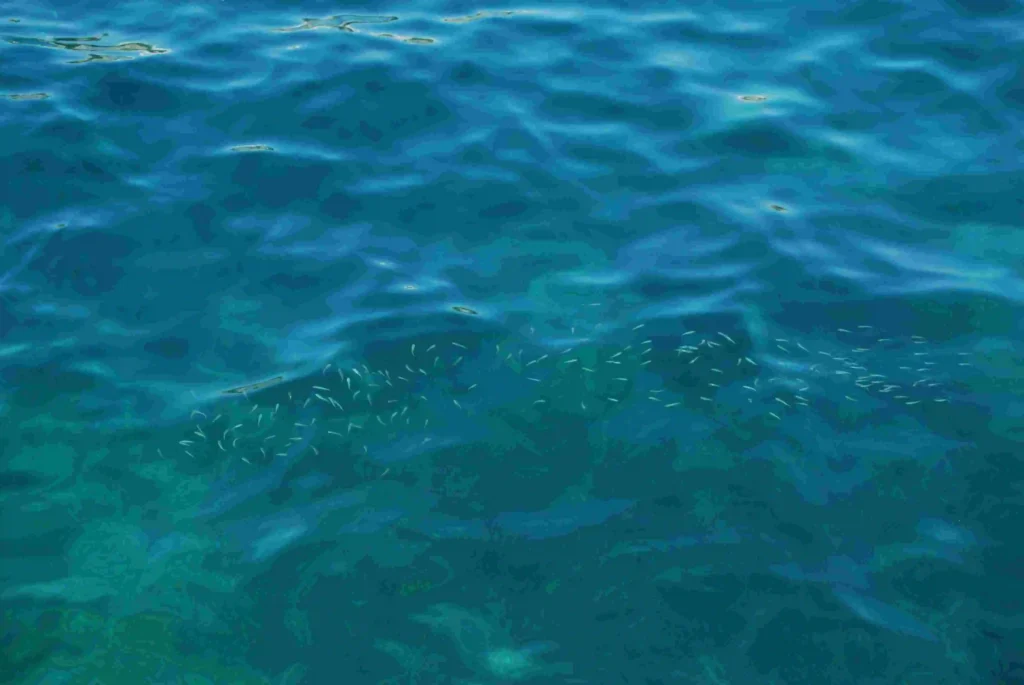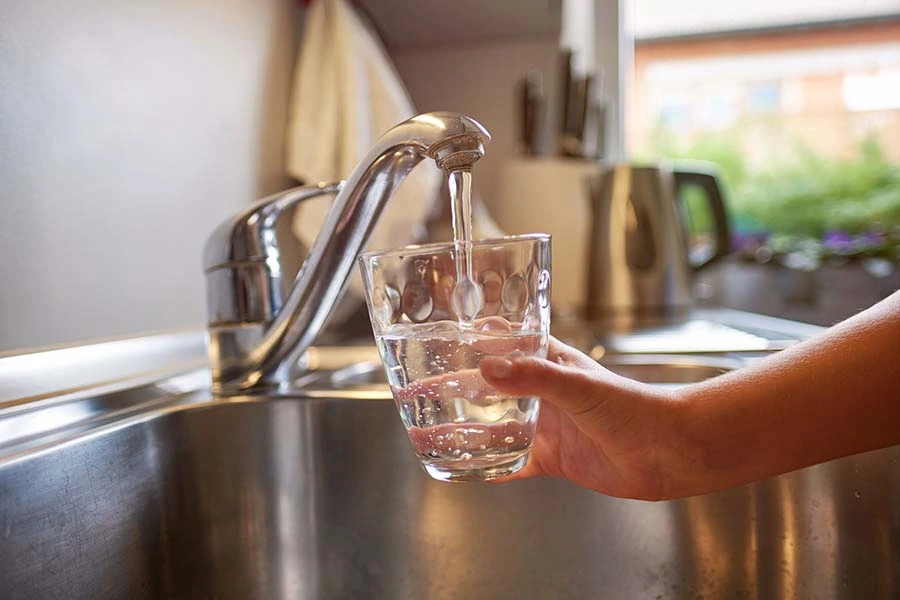
The proper choice between which water is best for fish tanks and types is of critical importance for fish tank inhabitants’ health and well-being. The optimal water condition for a fish tank may differ significantly depending on the particularities of the kind of fish and aquatic plants you want to keep.
Importance of pH, Hardness, and Alkalinity in Fish Tank Water
The role of pH, hardness, and alkalinity in fish tank water is equal to nothing because they are the goods of the water that pollute the ecosystem. Water is best for fish tanks and pH stands for the acidity or alkalinity of the water to which the fish is accustomed. Less concentration difference makes them healthier and they grow without any problem. Hardness pertains to the calcium and magnesium ions concentration and impeding fish from carrying out their intrinsic processes of regulating their internal chemistry. The other parameter that is sensitive to water acidity, namely alkalinity, measures the ability of water to reduce the acid effect on its pH levels. Failure to manage these parameters may cause the aquarium occupants to become stressed, sick or to die making regular examination and adjustment very important.
Different types of water suitable for fish tanks
Tap Water
Tap water is the most accessible source of water to use in an aquarium for most aquarium owners. On the other hand, this kind of tap water is quite common and constitutes chlorine and chloramines essential elements in the aquarium for the fish and the helpful bacteria. Applying a water conditioner that alkalizes the water helps get rid of these chemicals and renders the water safe for your aquarium and the owner must know which water is best for fish tanks Furthermore, you need to determine the pH levels, hardness, and different dissolved minerals in the water from the neighboring water source to find out the audience for your fish.

Advantages of Tap Water
- Cost-effective: Consequently, tap water is the most affordable alternative for running an aquarium and connecting its components.
- Readily Available: Indeed, the majority of us have the opportunity to meet these requirements, with our taps being the primary source of water.
- Mineral Content: Mostly consists of valuable elements that help the well-being of the fishes and give a balanced aquarium ecosystem.
- Easy to Condition: When suitable products are used they can transform tap water, which contains chlorine and chloramines, into safe water that is usable by aquariums.
- Regularly Tested: Tap water quality is a frequent goal of cities to meet set standards, which, in turn, people can adjust accordingly.
Disadvantages of Tap Water
- Chemical Treatment Required: Taps deliver chlorine and chloramines; this requires defiltration treatment before usage for the protection of the actual aquatic life.
- Variable Quality: A considerably different quality of tap air can be experienced in different locations and it may call for additional treatments to adjust the fish’s pH levels, and hardness, and remove other dissolved minerals unfit for a particular species of fish.
- Potential Contaminants: In places like these, tap water can carry danger from pollutants or excessive presence of minerals for genes and species.
- Pharmaceutical Residues: The presence of dipole-damped traces of medication in drinking water by an increasing number of people is a source of worry since that could be fatal to detox-effect-susceptible aquatic organisms.
- Environmental Impact: Resources deserve to be conserved as much as possible. In an area where water is scarce, the demand for freshwater by people can have an even more adverse effect.

Availability of Tap Water
Everywhere tap water is widely available and easy to deal with, it is the best choice among choosing which water is best for fish tank and aquarium enthusiasts due to how easy it makes regular tank maintenance. Although quality may not be consistent, with adequate water treatment, tap water can be a good aquarium option worldwide. Nevertheless, in places with problems concerning water quality, the investigation and the purification of the water are essential to meet the required standards for aquatic life.
Distilled Water
The water from distillation is usually free from chlorine, chloramines, and most other contaminants. It is thanks to this purity that water can be safe for fish and best for the fish tanks, however, distilled water is devoid of minerals and electrolytes that fish need to flourish. You should not only use distilled water to fill the fish tank but do it after the remineralization of the water.
Advantages of Distilled Water
- Purity: The distillation process makes water devoid of chlorine, chloramine, and most other impurities, which is perfectly suitable for aquarium-keeping.
- No Harmful Chemicals: This eliminates the need to treat the distilled water to remove chlorine and chloramines from regular tap water which could potentially lead to inadvertently harming fish.
- Consistency: Offers a consistent quality, providing a reliable base for more precise adjustments to meet specific requirements of aquatic species.
- Flexibility: Allows for the easy addition of minerals and electrolytes to tailor the water to the specific needs of the fish and plants in the aquarium.
Disadvantages of Distilled Water
- Lacks Essential Minerals: Distilled water does not contain the minerals and electrolytes fish need, which are crucial for their health and well-being.
- Requires Remineralization: Aquarists must add minerals back into the water, which adds a step in tank maintenance and setup.
- Cost: Purchasing distilled water can be significantly more expensive than using tap water, especially for larger aquariums.
- Environmental Impact: The process of distilling water and the packaging involved can have a greater environmental footprint compared to using tap water.
Availability of Distilled Water
Bottled distilled water usually seen in supermarkets and online is the option to go for those striving for convenience but less cost-effective. It provides the highest touch in water quality management and the best water for fish tanks which is beneficial for areas with lousy tap water. Nevertheless, the ecological price of manufacturing and transport have to be taken into consideration too.
Reverse Osmosis (RO) Water
Water which is processed by reverse osmosis is an additional option for pure water, filtered to remove contaminants, i.e. heavy metals, chlorine, chloramines, and most dissolved salts. As with distilled water, desalinated water has no minerals and it requires remineralization before use in an aquarium it contains good quality and best water for fish tanks. RO devices can be worthy purchases for aquarists seeking to maintain their water chemistry.

Advantages of Reverse Osmosis (RO) Water
- High Purity: RO water is incredibly clean, thus making it a good alternative for areas where water quality is of significance, especially to delicate or sophisticated aquatic species.
- Removes Contaminants: Removes a wide range of contaminants including heavy metals, chlorine, chloramines, and dissolved salts in a very effective way to ensure that a suitable habitat for plants and fish is maintained.
- Control Over Water Chemistry: Enables the aquarists to take care of water chemistry at their hands’ by adding the required minerals and supplements according to the type of fish in the pond.
- Long-Term Cost Savings: Having an RO system may indeed require a large investment upfront, but this is next to nothing when you consider the savings over time for improvements in fish and plant health
Disadvantages of Reverse Osmosis (RO) Water
- Initial Setup Cost: Installing an RO system is a pricey one which signals an enormously big initial hit in the pocket for the hobbyist of the aquarium.
- Wastewater Production: Far less output of purified water than the wastewater that is generated from the reverse osmosis system, which leads to the discharge of a huge volume of water.
- Requires Remineralization: Distillation of water is similar to RO water and depletes it from essential minerals. Therefore, the water has to be remineralized prior to its entry into the tank, dedicating an extra step to the fish tank maintenance schedule.
- Maintenance Requirements: The maintenance of RO systems involves frequent changes of filters and as a result, the quality of water may not remain as high as the initial output.
Availability of Reverse Osmosis (RO) Water
RO water finds its greatest space due to its availability and ease of use among aquarium enthusiasts. Homeowners can opt for RO installed on demand, while pre-filtered RO water to reuse is available from pet and aquarium stores in different sizes or quantities. This makes up for the quality of water maintenance, so it becomes the perfect choice and best water for the fish tank, but the initial setup budget and maintenance necessities should be taken into consideration.
Rainwater
Aquarium rainwater collection might be a cost-efficient and nature-provided way to fulfill your aquarium water needs. Nonetheless, it is pivotal to check the water quality as rainwater must be uncontaminated. pH and hardness of water can be thereby differentiated largely. Thus the testing needs to be checked and this water adjusted as per the aquarium’s requirement is a must to fulfill these needs.
Advantages of Rainwater
- Cost-Effective: Rainwater is a straightforward money-saving way of getting water for your aquarium, the need for bottled water purchases being minimized.
- Natural Source: As rain is a natural source of water that flows down freely, collecting it properly, rainwater turns out to be a little gentler and with a similar composition to natural water, which gets most on the surface of our planet.
- Reduced Chemical Exposure: The ingredients in rainwater which are chemicals such as chlorine, chloramines, and others used in purification processes in the tap are commonly not there, consequently less of the purification processes are needed before the use of rainwater.
- Environmental Benefit: Rainwater harvesting abbreviates municipal water extraction and consequently lowers up environmental imprint.

Disadvantages of Rainwater
- Contamination Risk: As rainwater travels across soil or through a collection system, there may be pollutant pick up, requiring testing and possible treatment before putting it in an aquarium.
- Inconsistency: The water quality in rainwater is usually not the same everywhere and depends on local geographical location and environmental conditions. Therefore, it is necessary to test it frequently and with great care.
- Storage Requirements: Shifting to rainwater collection and storage evokes the need for space and clean boxes to ensure zero contamination.
- Seasonal Variability: Since rainwater is not always accessible, it may not be a constant source, which will make it unreliable to use as an aquarium’s primary water source.
Availability of Rainwater
Rainwater, which is easy and cheap to acquire as and when required, however, is not as stable as the other options like rainwater because it varies as per the seasonal trends and local weather conditions. In such situations, for instance, dry weather or drought, harvesting rainwater is not easy. On the contrary, localities experiencing heavy rainfall would be able to bulk up their supply, although harvesting and storage systems should be taken into consideration to remove impurities and render water suitable for our aquarium decoration. It is the aquarium hobbyist’s responsibility to know the will weather conditions and purify and treat the water properly best water for fish tanks.
Dechlorinated Tap Water
Tap water with chlorine and chloramine absent is also called dechlorinated water. This is a very rational decision for a small aquarium. It is crucial that the chlorine removal product is of high quality, and water parameters are regularly monitored to match what your aquarium expects.
Advantages of Dechlorinated Tap Water
- Accessibility: The prevalence of dechlorinated tap water in domestic places makes it an easy option even for most hobbyists in the aquarium world.
- Cost-Effective: Except for tap water filtration to deduce chlorine and sulfates, other factors as the purchase of aquarium water or even the installation of purification devices can be costly.
- Quick Preparation: Through chlorinator application, tap water can be easily conditioned to sustain aquatic life within a few seconds and replace the aquarium water when necessary.
- Familiar Water Parameters: These organisms, especially, local ones, or those which can move freely through tap water to thrive, or have adapted to the environment found in tap water, can stay in this water without significant changes.
Disadvantages of Dechlorinated Tap Water
- Possible Contaminants: Though de-chlorination may remove chlorine & chloramines from tap water, it might still contain some other contaminants such as heavy metals or agronomic discharges which can affect aquatic living beings.
- Fluctuating Water Quality: Across the many parameters of tap water quality, there is variability in municipal water treatment procedures, conditions of the local environment, and contamination. This makes regularly monitoring and adjusting water parameters necessary.
- Chemical Dependence: Lots of chemicals being added for ammonium removal can affect water composition which can lead to the need for careful monitoring of the aquarium inhabitants.
- Limitations for Sensitive Species: Some species of fish and plants require certain degrees of water conditions which dechlorinated tap water cannot substitute without additional aquarium accessories for treatment and conditioning.
Availability of Dechlorinated Tap Water
Distilled and dechlorinated tap water is a time-saver for those who have easy access to the water from their local municipality this helps to make regular care more convenient. While its mixed quality could be affected by factors such as pollution, agricultural runoff, and treatment fluctuations, owners therefore must take a proactive approach to their water supply issues. Nevertheless, leakage of these chemicals may be dangerous, and as most aquariums use dechlorinated tap water it provides maximum protection and becomes a perfect choice best water the for the ecosystem.
Tips for Maintaining Optimal Water Quality Over Time
Water clarity in an aquarium being optimal is the key feature for the welfare of the aquarium inhabitants. Here are several tips to ensure your aquarium environment remains healthy and stable over time: Here are several tips to ensure your aquarium environment remains healthy and stable over time:
1. Develop a water testing schedule for important parameters including pH, EC, Chlorine, and Nitrite.
2. Conduct 20-25% water changes, every other week.
3. Only make sure your aquarium is equipped with a proper filter system.
4. Aquatic pet food should be given to them in a few minutes so that they can consume it.
5. Being mindful of the desired stocking levels will help you avoid overcrowding.
6. Quarantine new fish, aquatic plants, or decorations before establishing.
7. Inlight selections such as algae-eating fish and living plants by including them are recommended.
8. Regardless, make sure that the aquarium’s inner substrate is washed at least once per month.
Final Considerations
Regardless of the type of water you employ the best water for fish tanks, it’s very imperative to review it time and again for pH, ammonia, nitrites, nitrates, hardness (GH), and alkalinity (KH) to guarantee perfect and safe conditions for your swaying aquatic friends. Moreover, consider your species’ requirement, depending on whether your fish needs acidic or alkaline, or a change in the minerals level. Ensure to do it at a gradual pace especially to the initially new water conditions so as not to stress them out or make them shock. As long as you follow the basic principles of aquarium maintenance and take good care of your inhabitants, even labor-intensive sources of water can give you a sufficient and beautiful habitat for your animals. Your underwater environment will fill with beauty; rechecking those water parameters gives you a chance to enjoy that beauty! As always, happy fishkeeping!
Read More: Is Fish Tank Water Good for Tomato Plants?